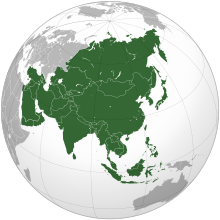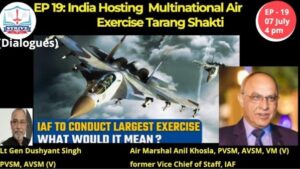(It was clarified that the views expressed are my own and have nothing to do with IAF or GOI)
The questions addressed and the essence of communicated opinions are as follows:-
Q1. What’s your take on the IAF’s modernization plan? Is it going as per schedule?
- Instead of modernisation, I would call it a capability development plan.
- Over the years its capabilities have increased manifold (e.g. – capabilities like precision, standoff, airlift, high altitude operations, all-weather 24 X 7 ops, network centricity, etc).
- However, the capacity in terms of quantity (war endurance) needs enhancement.
- The capability and capacity combined determine the deterrence value.
- The deterrence value required depends on threat perception (number of enemies, their capabilities, and their attitude and intentions).
- India faces a collusive threat with aggressive behaviour.
- Capability development and capacity enhancement is a continuous process.
- The process was a bit slow earlier but now has picked up pace.
Q2. How do depleting squadron numbers pose a challenge to the IAF?
- Yes, it definitely is a challenge, considering the threats and prevailing environment.
- The drawdown has taken place to about 30 odd squadrons much below the authorised strength.
- The actual numbers needed in order to have the requisite deterrence value would be much higher.
- A drawdown mitigation plan exists and is reviewed periodically.
- Self-reliance is one of the important factors in the plan (also a major lesson learned from the ongoing Russia-Ukraine war).
- India is trying the “Leap Frog” method.
- There have been slippages and delays in the past.
- The pace has picked up in the last few years due to the recent initiatives and the multi-pronged approach.
- IAF has always supported self-reliance and would continue to do so.
- However, the minimum deterrence value and a balance between quality and quantity need to be maintained at all times.
Q3. The IAF plans to acquire more jets under its ambitious plan to purchase 114 foreign fighter planes – will India go for Sukhois or stick to Rafales?
- First of all, I would replace the word ambitious with needed, urgent, or crucial in the question.
- Keeping in mind what I said earlier about self-reliance, minimum deterrence value, and maintaining of balance between quantity and quality.
- The Indigenous fighter aircraft development plan consists of Tejas MK IA, 4.5 generation Tejas MK II, and 5th generation AMCA.
- The project was slow earlier but has picked up pace now. However, newer versions are some time away and the existing gap needs to be filled up on priority.
- The acquisition of 114 fighter jets is crucial.
- In view of India’s priorities and focus, the deal needs to be “make in India” with a high content of technology transfer.
- As far as which one to buy, would depend on the selection process, which is quite exhaustive and transparent.
- Some of the factors for consideration would be:-
- Capabilities Vis-à-vis Qualitative requirements.
- Price – maximum “bang for the buck”.
- Support to “Make in India”.
- Transfer of technology.
- Ability to deliver and sustain.
- Geo-Political and Geo-Strategic aspects (Including past and present relations).
Q4. How the IAF is helping the Indian Army in its current stand-off with China?
- The question needs rephrasing.
- It is a national situation, requiring a whole of nation (all tools of statecraft) approach.
- The defence services are doing the needful jointly and synergistically.
- IAF undertakes missions to accomplish its roles and tasks (like any other defence force), including:-
- Political and strategic signaling.
- Rapid mobility, troop induction, and transfer.
- Sustenance and supply (equipment, ammunition, weapons, rations, etc).
- Casualty evacuation and medical support.
- Enhancement of situational awareness by reconnaissance and information sharing.
- Joint planning and monitoring.
- Training and equipping to meet challenges.
- All the assets of IAF are always available to deal with prevailing or emerging situations.
Q5. How do you view the induction of LCA Tejas in the IAF and Navy, and can the homegrown aircraft become the lynchpin of India’s security apparatus?
- The LCA Navy had been converted into a technology demonstration program.
- The experienced gained would be utilised to develop a TEDBF (Twin Engine Deck Based Fighter).
- IAF has already inducted two squadrons of Tejas aircraft.
- 83 Tejas Mk I aircraft are on order.
- Tejas Mk II and AMCA are under development.
- The teething problems have been addressed and the indigenous fighter aircraft program is evolving and maturing.
- It is essential because of aspects related to cost, self-reliance, the latest technology, availability, integration, and modifications.
Q6. In recent years, the Indian Air Force has been focusing on indigenous helicopters and there have been reports that New Delhi’s deal for Russian-built Kamov helicopters has been put on the backburner. What’s your take on this?
- Cannot comment on this issue as I am not privy to IAF or government thinking and decisions.
- My personal views are that given a choice, it is always advantageous to go in for indigenous products due to reasons enumerated earlier.
Suggestions and value additions are most welcome
For regular updates, please register here
Subscribe
References and credits
To all the online sites and channels.
Disclaimer:
Information and data included in the blog are for educational & non-commercial purposes only and have been carefully adapted, excerpted, or edited from sources deemed reliable and accurate. All copyrighted material belongs to respective owners and is provided only for purposes of wider dissemination.


